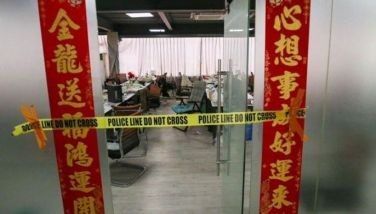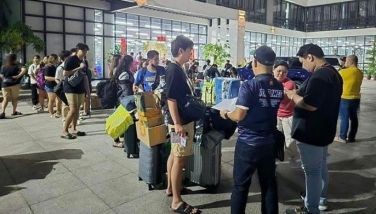A city of smiling faces
Our country constitutes an archipelago of 7,107 islands which are divided into three main groups Luzon, Visayas and Mindanao. In each island group, there is an abundance of places worth visiting, each one promising a unique and exciting experience. In the Visayas, situated on the northwestern part of the island of Negros bounded by the Guimaras Strait on the west, the municipality of Talisay on the north, the municipality of Murcia on the east, and Bago City on the South, lies what is dubbed as the “City of Smiles”.
There is almost idyllic feel to its surroundings. The place has a cool and invigorating climate with abundant rainfall which probably contributes to the cheerful disposition of its people. It is therefore no surprise that it once topped a survey by Money Sense Magazine as the “Best Place to Live in the Philippines”. Bacolod is one of our country’s most progressive and elite cities. It is best known for being our country’s Sugar Bowl. Along its highways, sugarcane plantations are a common sight. Bacolod was derived from the Hiligaynon word bakolod — meaning “stonehill” because the settlement was founded in 1770 on a stony, hilly area, now the district of Granada. However, due to Muslim raids that frequently occurred in 1787, Bacolod was transferred towards the shoreline. The old site became known as Da-an Banwa, meaning “old town”.
Bacolod is also known for its world-famous Masskara Festival. It is a yearly event, commencing at the start of October and culminating on the weekend nearest October 19th, the city’s Charter Day. The term Masskara has a double meaning. It is a combination of the English word “mass” or many and “kara”, the Spanish word for “lace”. Combined, “masskara” then means three “mass of faces”. Masskara is also an inflection of the Tagalog word “mascara”, meaning “mask”, a reference to the giant, smiling masks in varied hues, shapes and sizes used by dancers in brightly-colored costumes during the daily street-dancing parades.
The festival first began in 1980 during a time of crisis and tragedy for Bacolod. It was when the price of sugar, the flagship industry of the province, fell to an all-time low due to the introduction of cheaper sugar substitutes from other countries. Then, on April 22 of that year, the inter-island vessel M/V Don Juan collided with the tanker Tacloban City and sank. An estimated 700 people died, including those coming from prominent families in Bacolod. In the midst of the gloomy atmosphere that enveloped the city, its officials and civic leaders decided to hold a festival which they hoped will uplift the spirits of their downhearted people. Thus, the Masskara Festival was born.
Since its inception, the festival continues to be one of our country’s grandest and most joyous events, belying the depressing circumstances on which it was founded. Beyond the fun and excitement that the Masskara Festival brings however, it should also serve as a symbol of hope and courage for all of us. Life will always be a constant struggle. But we can always emulate the people of Bacolod who, even through life’s adversities, have dreaded a city of smiling faces.
- Latest
- Trending



























